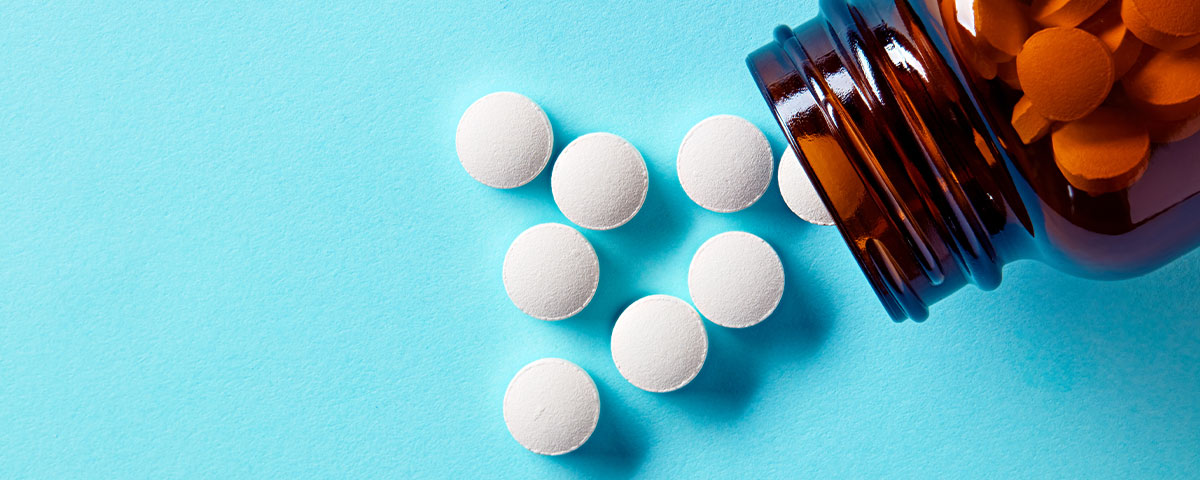Polydrug abuse involving alcohol is common. Mixing Molly and alcohol occurs most often in the club or party scene. People usually combine alcohol and Molly because they want to experience more intense side effects than they would by just using one of these substances. As a drug rehab in Massachusetts that’s helped countless people recover from the effects of polysubstance abuse, we know that combining Molly with alcohol can lead to dangerous and sometimes irreversible consequences.
What Is Molly?
Also known as ecstasy or (3, 4-methylenedioxymethamphetamine), Molly is a synthetic drug that’s known for its hallucinogenic side effects. Molly can come in powder or liquid form, but it’s most often found pressed into a pill or in the form of brightly colored tablets.
Because it acts as both a stimulant and hallucinogenic, mixing ecstasy and alcohol can produce mind-altering and energy-increasing side effects. This combination keeps people alert and awake while enhancing their senses and their party experience.
Despite how it may make people feel, Molly is anything but safe or happy. Molly is an extremely dangerous drug that can easily cause a person to overdose. Molly can also be addictive. Users who become tolerant and accustomed to its side effects may become physically and mentally dependent on it.
The Massachusetts detox offered at Clearbrook Treatment Centers is designed to help people who are addicted to synthetic drugs like Molly (MDMA) gradually and safely wean off of it. With the support of detox medication (administered as needed), withdrawal symptoms can be mitigated to ensure the client’s safety and make them more comfortable. Detox is normally the first step of treatment for our patients because it improves their chances of completing their rehab programs down the road.
What Are the Effects of Molly?
Many people consider Molly a substitute for amphetamine because it produces both hallucinogenic and stimulant side effects. Due to these side effects, mixing MDMA and alcohol is common at parties, raves, and clubs.
Molly works by increasing the levels of three neurotransmitters in the brain, dopamine, serotonin, and norepinephrine. Each of these chemicals affects certain functions. When their levels are increased or decreased, the person may experience various symptoms.
Common side effects of Molly include:
- Blurry vision
- Chills
- Excessive sweating
- Feelings of euphoria and well-being
- Increased alertness
- Increased blood pressure
- Increased energy
- Increased heart rate
- Increased sexual arousal
- Muscle cramping
- Nausea and vomiting
- Teeth clenching
These Molly side effects usually kick in after about 45 minutes and can last anywhere between three and six hours. As side effects wear off, the individual may continue to take more of it. This pattern of use can cause symptoms like irritability, depression, aggression, and memory problems and may also increase the risk of overdose.
What’s more, because Molly is addictive, the best way to quit using it is with professional help. Our Massachusetts rehab offers MDMA addiction treatment that addresses the mental and physical effects of Molly (MDMA) abuse.
Can You Mix Molly and Alcohol?
So we’ve talked a lot about the dangers of taking ecstasy (Molly), but what happens if you mix ecstasy and alcohol? You should never mix alcohol and ecstasy, as doing so can cause several adverse side effects that can develop into long-term health problems in the future.
Individually, both substances affect levels of different neurotransmitters in the brain, and together they can cause a serious chemical imbalance, resulting in a variety of symptoms unpredictable in severity and duration. It’s also difficult to gauge how much of either is being ingested when taken together, which increases the risk of overdose and death.
Common side effects of Molly and alcohol include:
- Confusion
- Dehydration
- Depression
- Difficulty or inability to urinate, which could cause damage to the kidneys
- Excessive sweating
- Impaired judgment and ability to make decisions
- Increase body temperature
- Increased blood pressure
- Increased heart rate
- Irritability
- Muscle spasms
- Severe dehydration
Another major problem of combining Molly and alcohol is that the liver is forced to metabolize both drugs. Too much alcohol can slow down the removal of MDMA from the body, causing a buildup of the drug. This can lead to more intense or serious Molly side effects.
Combining both drugs can also severely impair judgment and coordination, increasing the user’s risk of injury, assault, unprotected sex, and a car accident if they were to drive under the influence. Dehydration is also a major adverse reaction of drinking on Molly, as this could cause the body to shut down and be deadly in extreme cases.
The effects of mixing ecstasy and alcohol are also influenced by the cutting agents or additives in ecstasy. Molly (ecstasy/MDMA) is a street drug that’s often cut or mixed with other unknown chemicals and substances. These substances can also be harmful and cause adverse side effects of their own, and when mixed with alcohol, the results can be deadly.
Help for Molly and Alcohol Abuse
Addiction is also a risk that alcohol and MDMA users should be aware of. Both substances are highly addictive, especially alcohol, and long-term abuse can contribute to a chronic, relapsing disease that requires professional care. The good news is that those who have developed a drug or alcohol addiction can recover with the right kind of support.
For more information about our Massachusetts substance abuse treatment and how we can support you or a loved one in recovery, call Clearbrook today at 570-536-9621 or send us your contact information, and an admission specialist will reach out to you.
Related Reading:







